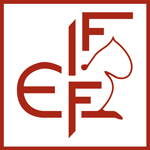Introduction
The Sokoke is a natural breed of domestic cat, developed and standardised, since the late 1970s. It is named after the Arabuko Sokoke National Forest in Kenya.
History
The Sokoke breeding programme begun in 1978 by Jeni Slater, who originally named the breed the African Shorthair. She used cats found in and around Watamu (Kenya), both raised from kittenhood and enticed from the adult feral population with food rewards. Gloria Moeldrop brought a pair of Slater’s cats home with her to Denmark to breed in 1983. The cats were first shown in Copenhagen (Denmark) in 1984. Moeldrop imported more cats from Kenya to strengthen her European breeding stock. The breed is recognised by FIFe since 1994.
Appearance
The bodies of the Sokokes are medium-sized, long and thin, with long legs. The back legs are longer than the front legs. Their eye colour is usually amber to light-green, set in a comparatively small head. Sokokes have blotched tabby coats. The centres or “oysters” of the patterns are hollow-looking due to the agouti gene, which also produces a “ticked” or “salt and pepper” look to the coat. This has been called “African tabby”.
Temperament
Sokoke cats are very active and enjoy climbing. They tend to be vocal toward human keepers and other cats with whom they live. They bond deeply to each other, as well as their owners. This trait makes re-homing harder for them, with a longer adjustment period expected in adult cats and older, already-bonded kittens.
